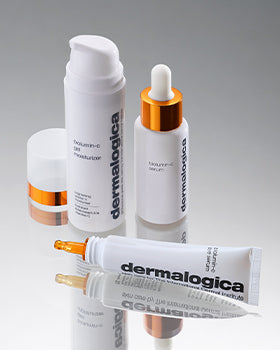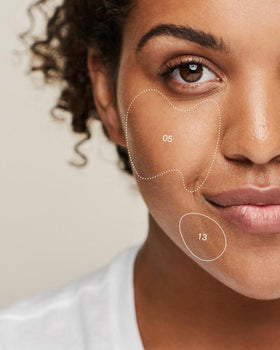Have you ever looked in the mirror and noticed some new skin spots that weren’t there before? If so, you are in the right place. In this article, we will walk you through the difference between types of skin spots and how to treat them.
Are you seeing a few dark spots where your pimples used to be, or just got back from your 10-day vacation in the tropics only to find darker patches appearing on your face even after your tan fades? Maybe you are seeing some spots appear after some recent hormonal changes (such as pregnancy or using birth control pills)? Then you might be looking at hyperpigmentation on your skin!
In this article, we will help demystify the following:
- What is hyperpigmentation?
- What are the common types of hyperpigmentation?
- Hyperpigmentation and dark skin tones
- Treating hyperpigmentation
- How to prevent hyperpigmentation?
What is hyperpigmentation?
Well first off, it’s a mouthful. So let’s break it down. The term “hyper” when used in medical terms means “more” or “excessive.” “Pigment” is the color of our skin. Hyperpigmentation basically translates to “more pigment” and that pigment is melanin. Melanin is produced by our cells and is responsible for giving us our skin tone. When those cells overproduce melanin in certain areas, the skin will appear darker than our natural tone.
What are the common types of hyperpigmentation?
There are several different types of dark spots which can appear on the skin in a number of different ways. Here is an overview of the most common types of hyperpigmentation:
- Melasma: is caused by hormonal changes that can impact melanin production. These changes often develop during pregnancy or when using birth control, and result in areas of hyperpigmentation that most commonly appear on the forehead, cheeks and upper lip.
- Sun spots: are related to excess exposure to UV rays over time and are widely considered to be the most common type of dark spots. They generally appear as dark spots on areas that are typically exposed to the sun, such as the neck, chest or face. In addition, sun exposure can intensify hormonal and PIH. In fact, only 30 minutes of unprotected time in the sun can undo a month’s worth of effort in fighting hyperpigmentation! Here is your reminder that SPF is important to wear every day!
- Post-inflammatory hyperpigmentation (PIH): is any form of trauma with associated inflammation, whether from acne, infections, injuries or over exfoliation, can result in PIH. This form of pigmentation can generally be treated quite successfully if the inflammatory triggers have subsided. The longer the tissue remains inflamed, the more intense the hyperpigmentation can become.
Hyperpigmentation and darker skin tones
Not only are there different types of dark spots but hyperpigmentation can look different on everyone. For lighter skin tones, hyperpigmentation may appear as red or pink spots and for darker skin tones it may show up as more purple, brown or black spots. In fact, those with medium to dark skin tones are more prone to hyperpigmentation (skin tones Fitzpatrick IV or greater) as their skin naturally produces more melanin.
Treating hyperpigmentation
Treating hyperpigmentation can be tricky. There is no quick fix for hyperpigmentation, but stick with it and you’ll eventually see brighter, firmer skin.
Unlike other forms of hyperpigmentation, PIH (post inflammatory hyperpigmentation) usually fades relatively quickly after trauma to the skin. Some ingredients to help fade PIH are barrier-restoring Omega-3 blends, Niacinamide, Vitamin C and fast-acting AHA & BHA. These ingredients can be found in our PowerBright products.
Our PowerBright Dark Spot System is a great place to kickstart treating your existing hyperpigmentation concerns. This 2-step system pairs our daily PowerBright Dark Spot Serum that helps fade the appearance of uneven pigmentation over time and our PowerBright Dark Spot Peel, which helps visibly lift surface pigmentation in a wide range of skin tones and types, including melanin-rich and hyperpigmentation-prone skin.
In addition, our PowerBright Overnight Cream is our nourishing nighttime cream that optimizes skin moisture recovery and helps restore luminosity to fade dark spots while you sleep. Niacinamide in formula helps lighten pigment, keeping that hyperpigmentation away!
How to prevent and protect your skin from hyperpigmentation
Good news - developing hyperpigmentation is preventable with a good skin care regimen and a little patience. Sunscreen is your BFF to protect the work you are doing to address your existing hyperpigmentation concerns and prevent future concerns down the road. Consider adding our PowerBright Moisturizer SPF50 or our Dynamic Skin Recovery SPF50 daily to your daytime skin care routine.
If you think you might be dealing with hyperpigmentation from hormonal changes, it's best to consult with your doctor so they can really assess your situation.
Whether you are here to prevent, protect or treat your hyperpigmentation concerns, the key to having healthy, glowing skin is to invest in your skin health today.



